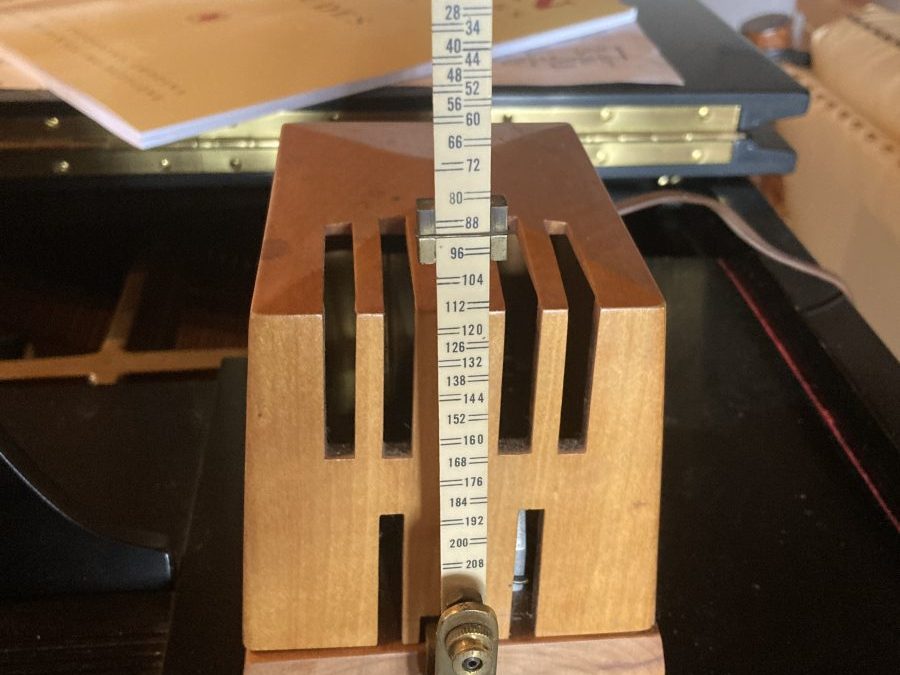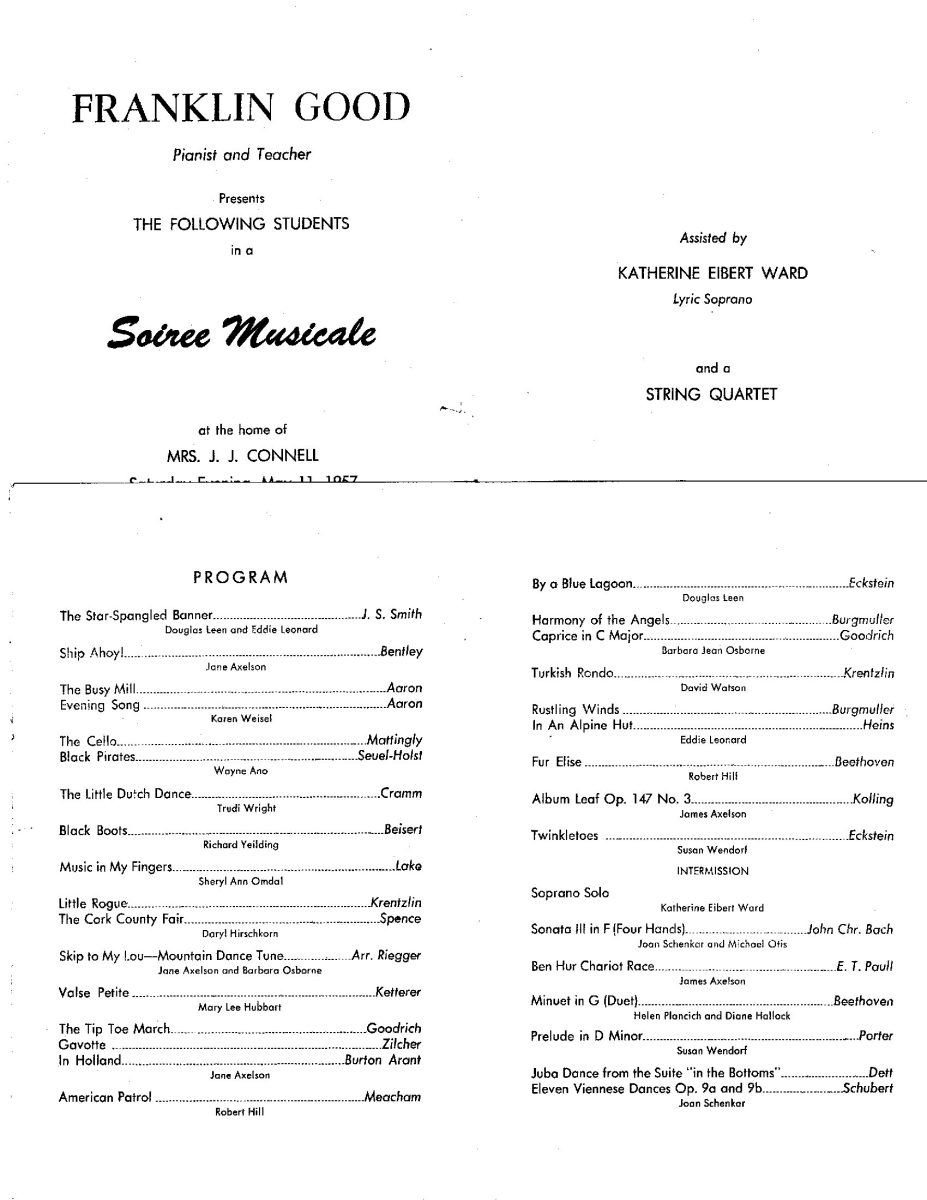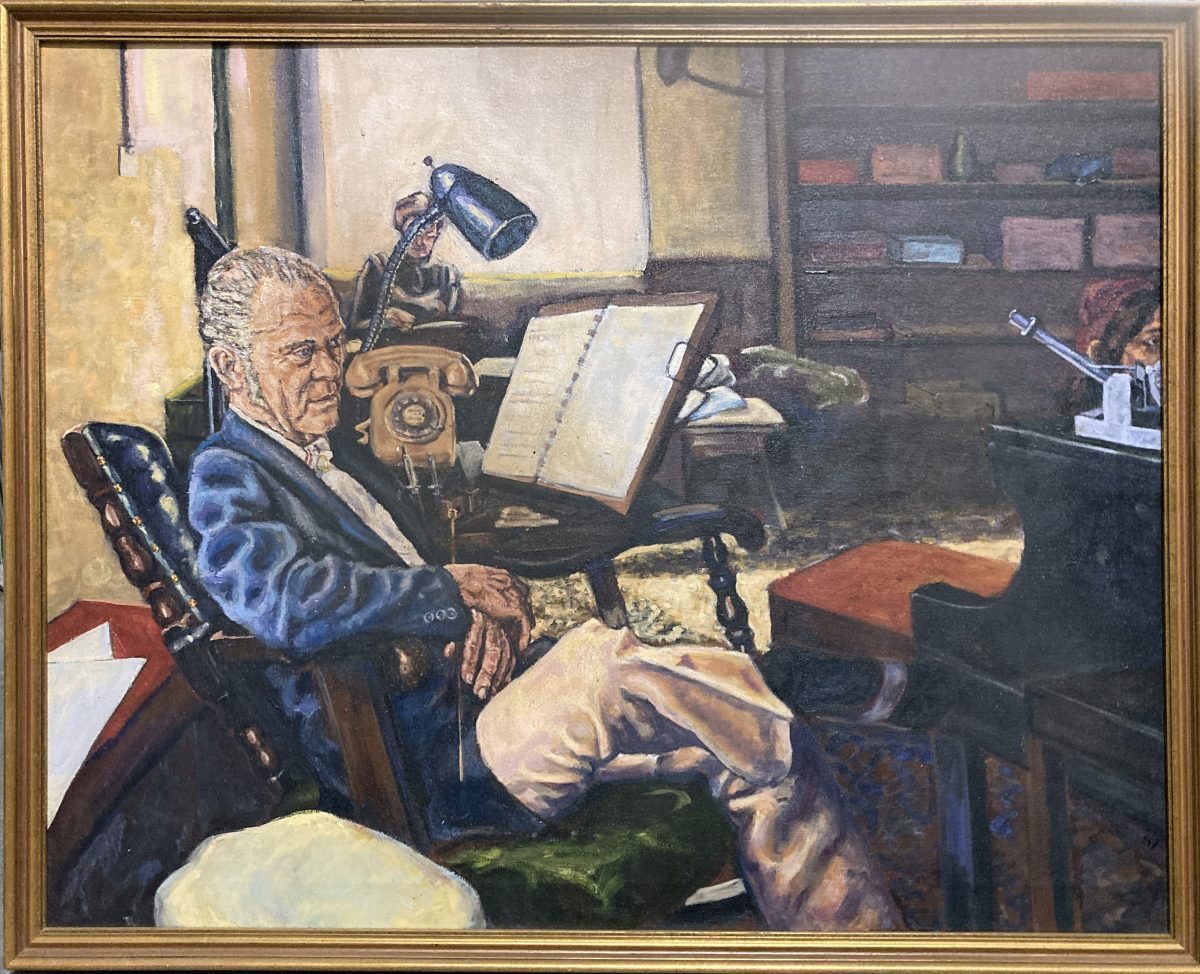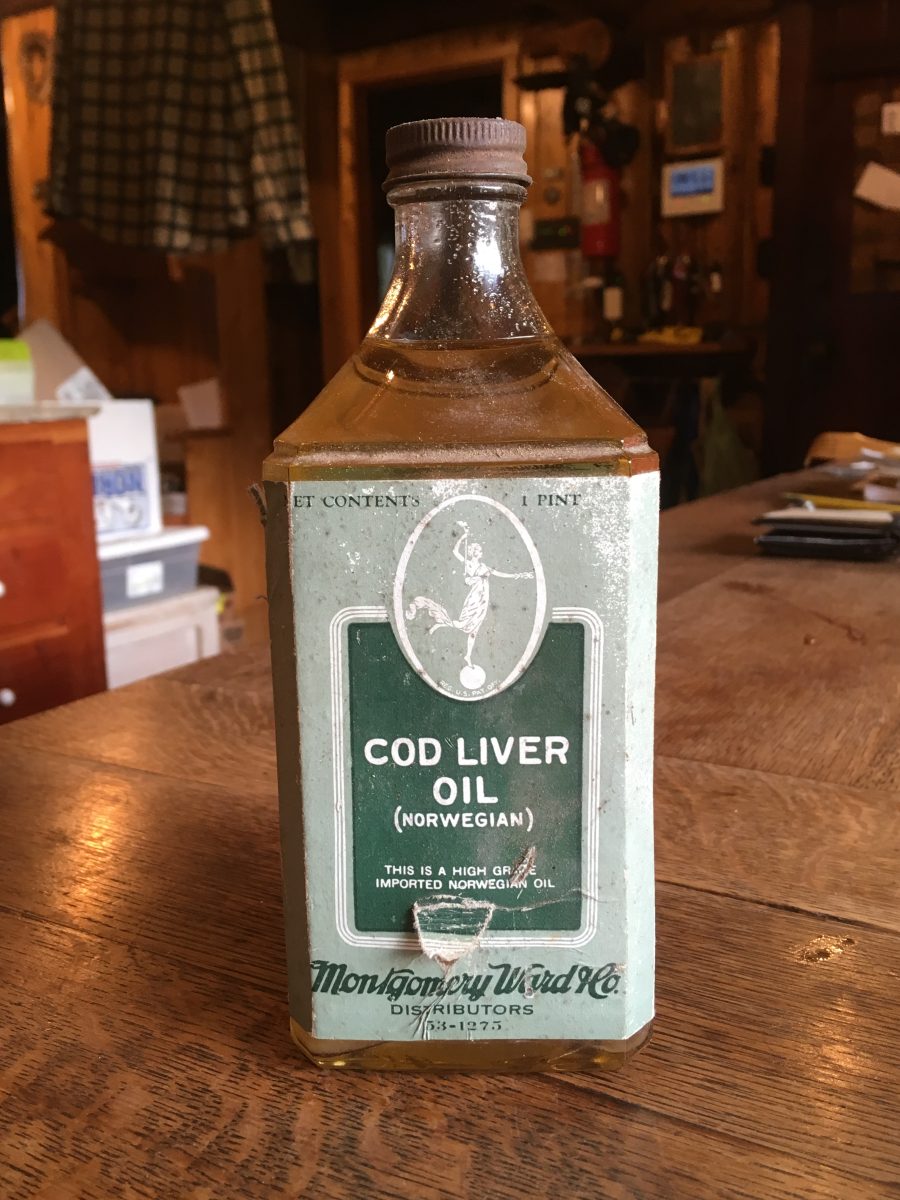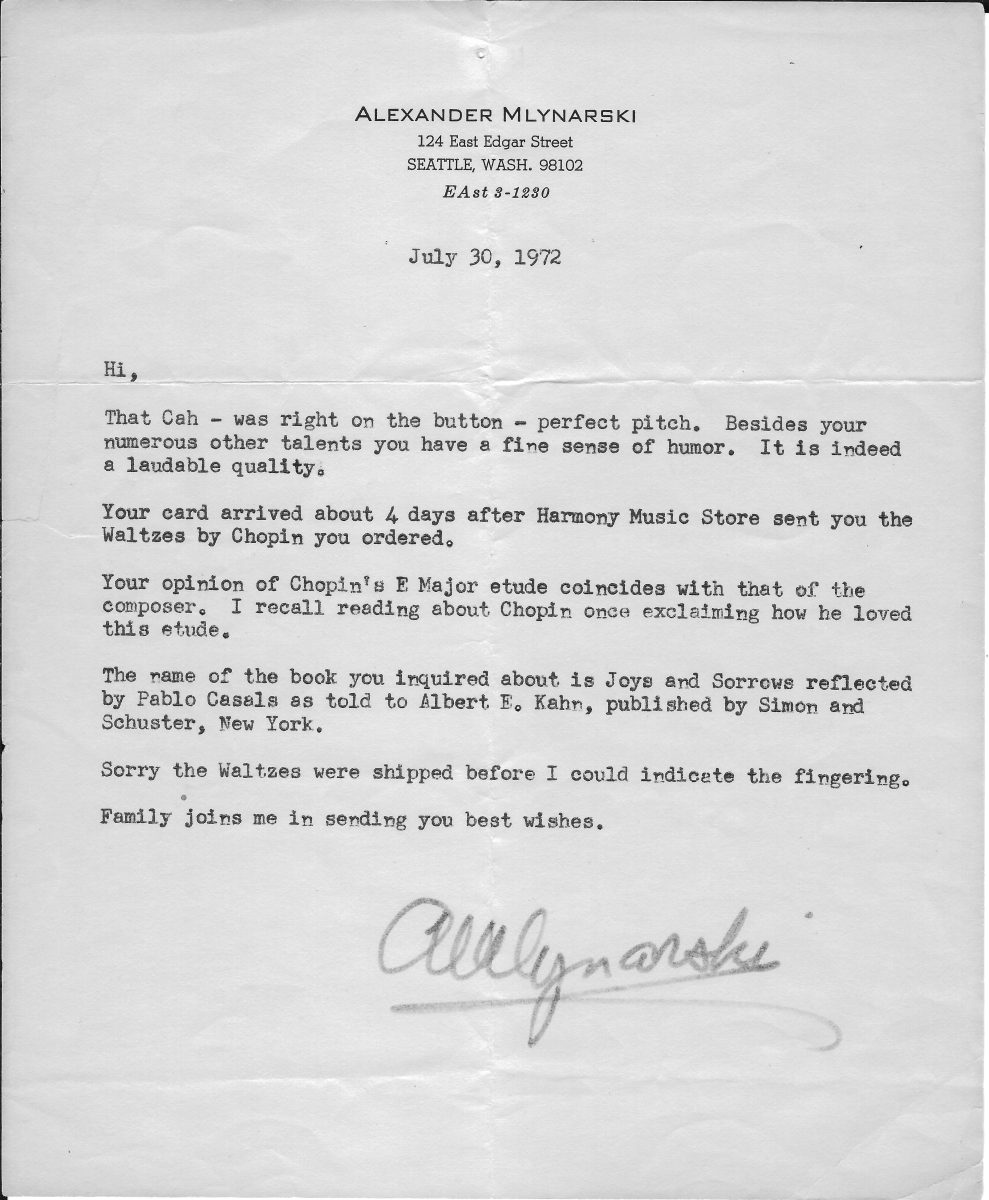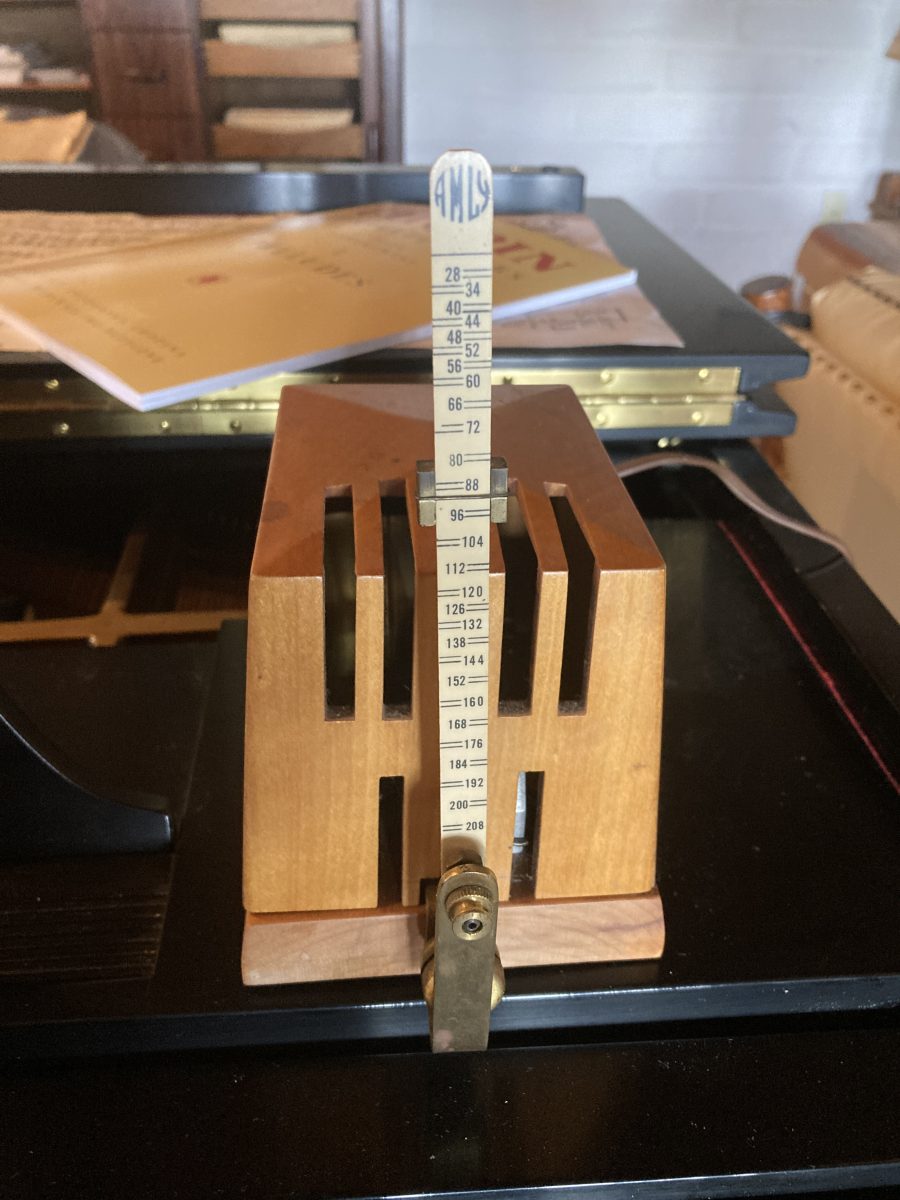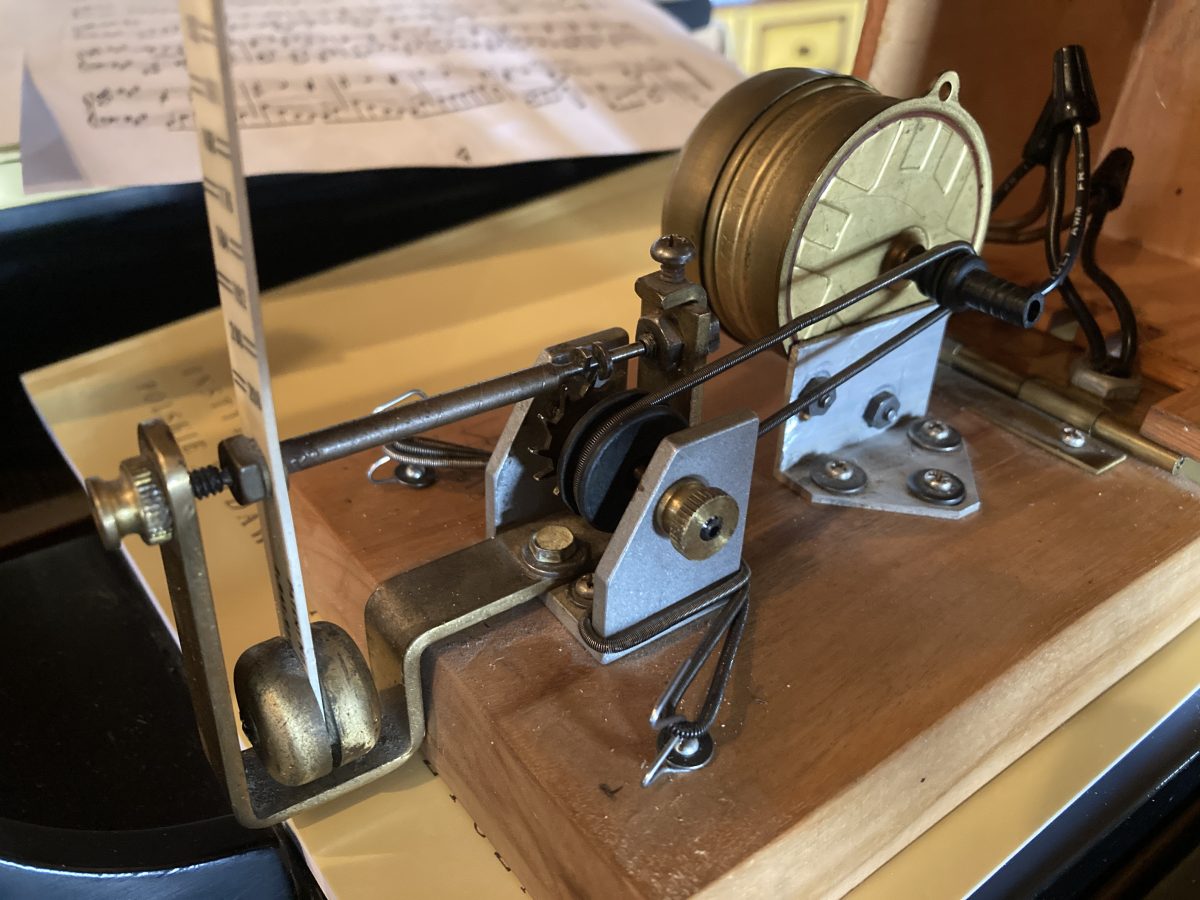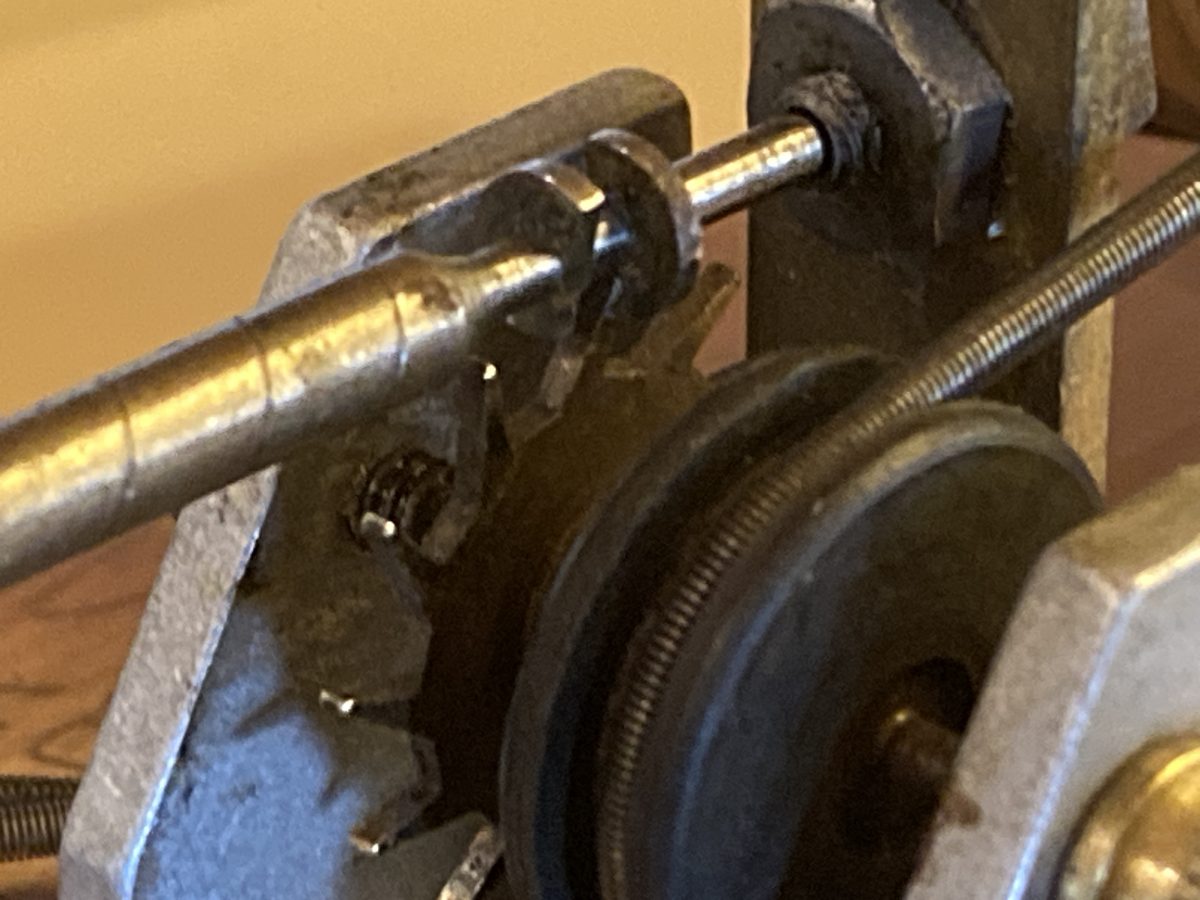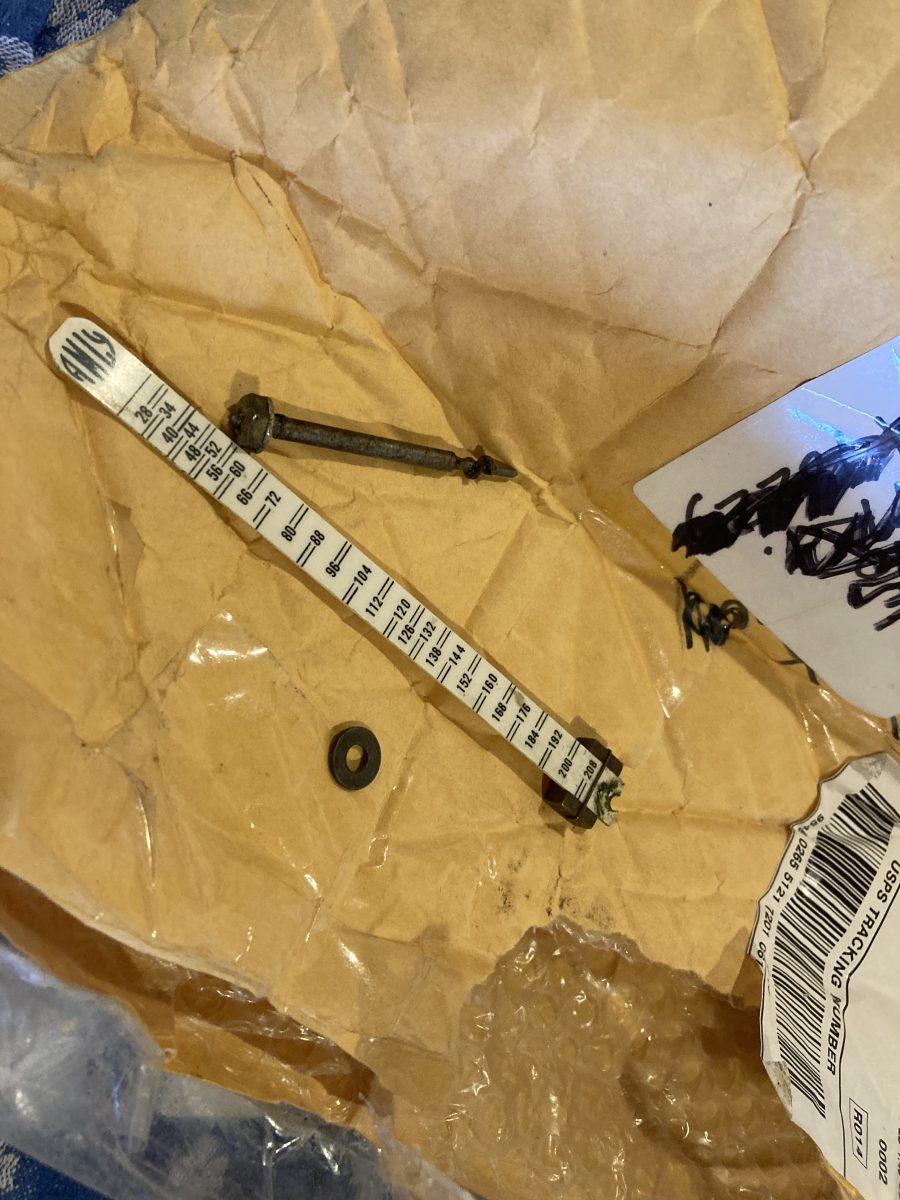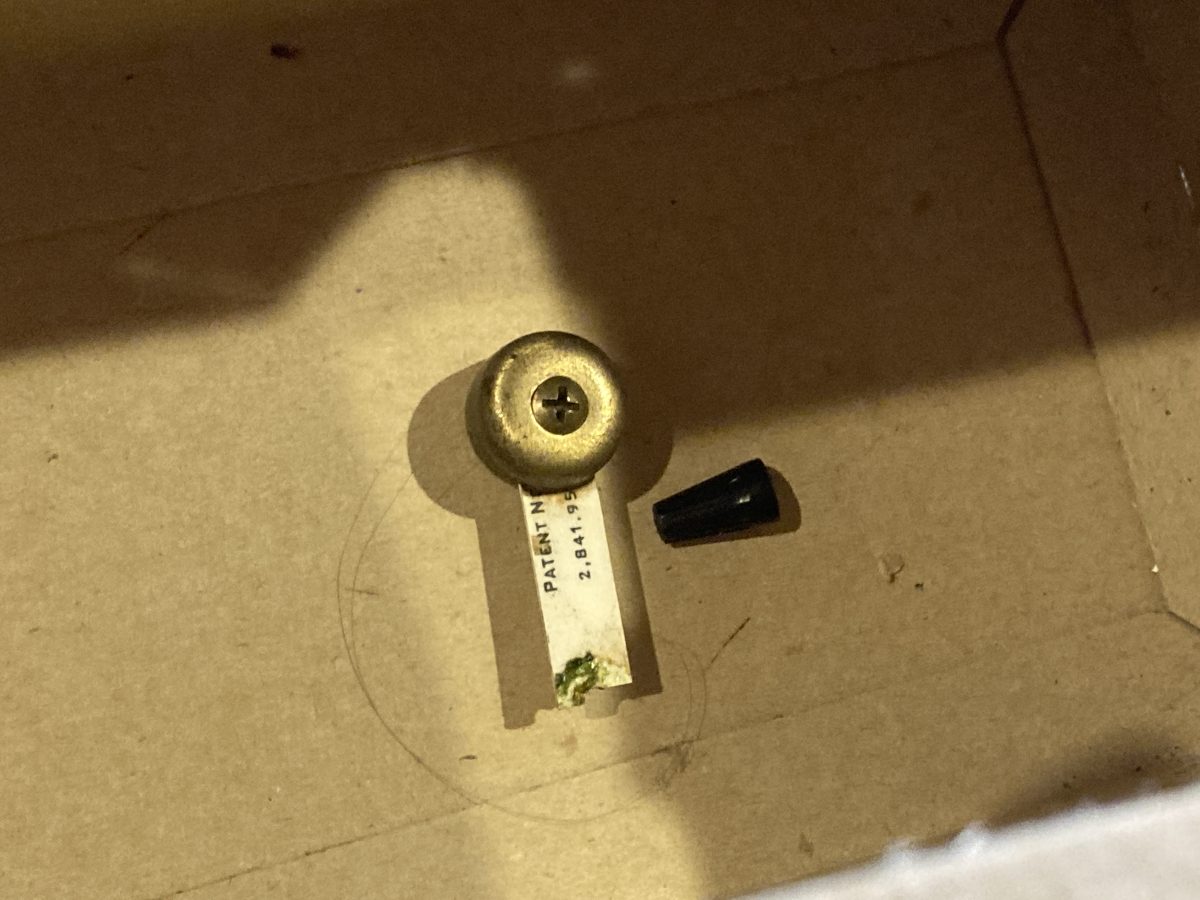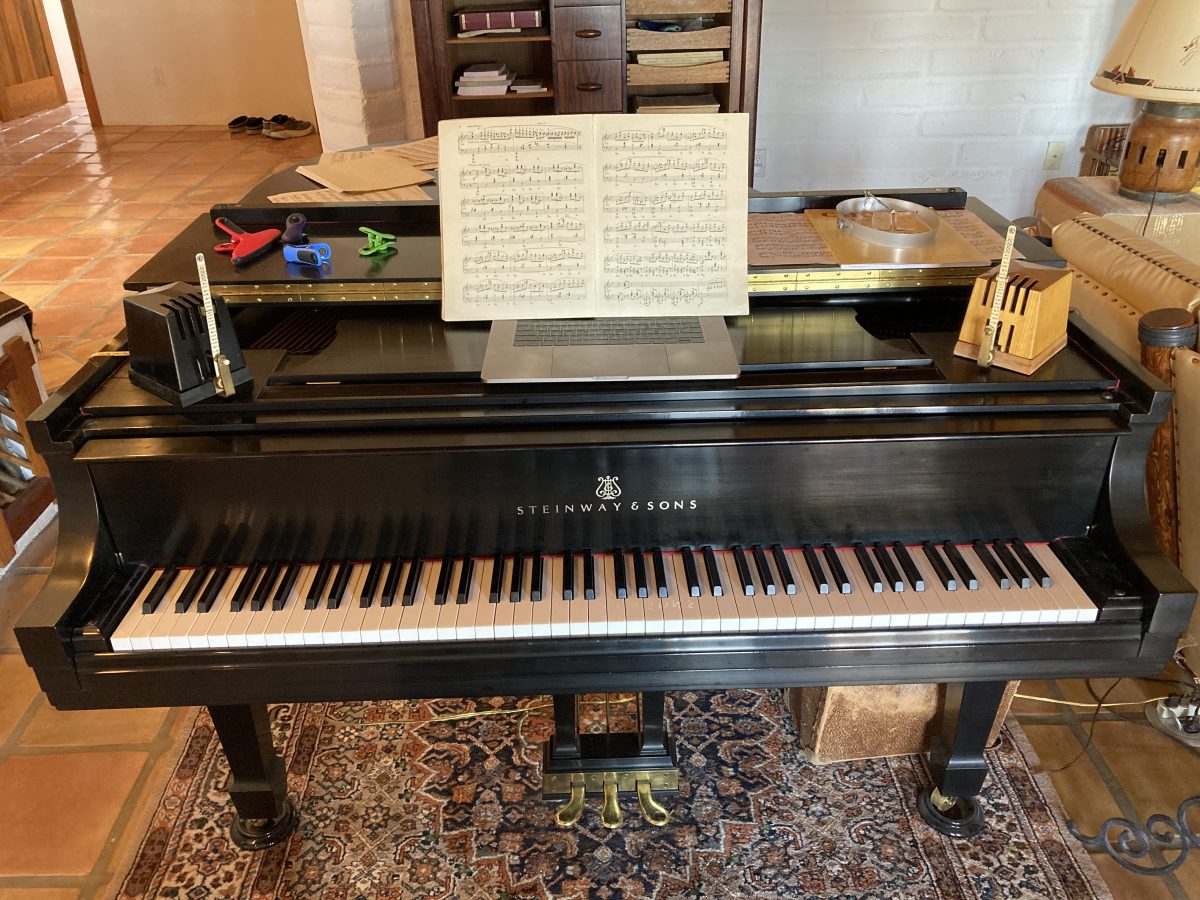My music education resurfaced in a sorority house in the 1960s during college days. While waiting for my date to descend the circular stairs in perfect splendor, I heard a beautiful piano melody precede her entrance. Upon inquiring, I learned it was none other than Beethoven’s Moonlight Sonata (Opus 14, No. 2 in C#minor)–first movement. What an entry, I thought! It made me think back a decade earlier on my first days of piano lessons; first with Lily Mae Anderson who made me wash my filthy, grimy hands–with soap even–before each lesson on her immaculate Steinway.
I then “graduated,” dirty hands and all to Mr. Good, at Eastside Music in Kirkland Washington. Now, Mr. Good was a bit odd I thought, but I didn’t quite know why–he would often shake my hand for 10 minutes at a time. Well, I didn’t know about those things then however, the shop owner, Wilhelm Kostenbader, a very proper German violin maker would keep an eye on these greetings. And if the piano music stopped in the practice rooms, his footsteps could often be heard right outside. I spent two years studying piano when I was about 10-12, then gave it up after being put stage-center at Mrs. J. J. Connell’s huge mansion on Capitol Hill in Seattle–at Mr. Good’s annual piano recitals. I opened the recital with the Star Spangled Banner–a duet with middle school classmate Eddie Leonard. Later I enchanted the audience with Eckstein’s virtuoso piece, “By a Blue Lagoon.” I’m sure you’ve heard it…… Music was not going to be my career; at least that’s what I thought until I heard the Beethoven Sonata.
After graduating in Geology in 1970 and at my first opportunity to pursue leisure studies–about 1971–I visited a music store (that sold sheet music to you young whippersnappers) and perused the literature there finally settling upon a Bach two-part invention, to begin my re-education. I tucked the Bach under my arm (along with Beethoven’s Moonlight Sonata) and made for the cash-register until I was urgently flagged down by a rather distressed fellow with a mild Russian accent. His name was Alexander Mlynarski. Alex looked at the Bach under my arm and said that I must be a very advanced musician, etc., etc. but when I explained my mission to relearn my earlier pianism, he insisted I begin with something more basic and less complex…..and besides, he desperately needed that sheet music for another student–I had the only copy. He offered me a free piano lesson in exchange for the sheet music and I gladly accepted. We became fast friends, and I became his student for one year of intensive piano study.
Alex was born in Harbin China in 1900 and spent his youth in Vladivostok where he trained as a pianist there. Fed up with the Bolsheviks, he traded his piano for an American passport and landed in San Francisco about 1920–I’m not sure of the exact dates. He studied piano at the San Francisco Academy of Music; one of his classmates was the famed pianist Guiomar Novaes. He would list his pedigree of teachers from the Academy and back in time: Stoyewski, Paderewski, Leschetizky, Czerny, Beethoven, Mozart, Hayden and Bach….”.the spring from which all music flows.” Somehow this magic and talent was supposed to be inherited, but not by me.
A painting of Alex in his studio–hand on his baton with a prototype of his metronome in the starboard position on the edge of the Steinway. A terrified student plies on. Alex always scheduled me last in the evening and we often spent more than my allotted hour discussing both music and politics.
*************
I had just been hired by the National Park Service working summers in the Tetons and winters in Seattle working for Eddie Bauer. I lived on a houseboat on Lake Union–houseboats couldn’t support pianos, but my log cabin in the Tetons could. Life was good. While in Jackson Hole, I worked as a Jenny Lake Ranger–one of six rangers comprising the mountain rescue team. We had one telephone, and no other forms of communication other than our park short-wave radios and a funky cowboy AM radio station in town. I realized I needed to continue my musical studies and found a nice upright piano in Idaho Falls (Chesbro’s Music)* where they also had a wonderful selection of sheet music–including the complete Paderewski editions of Chopin. I paid $135 for the piano with my first park paycheck, borrowed a fellow ranger’s truck, and hauled it over the old Teton Pass road–all 200 switchbacks. I had the only piano at Jenny Lake–there were now three in the town of Moose.
*Chesbro’s Music is still in business! Chesbro’s is to sheet music what Dornan’s Bar (in Moose, Wyoming) is to Bordeaux wine–the widest collection of their respective products west of the Mississippi River. Hell, these Mormans know a bit about wine and music after all!
Back to my music education…… Alex was not only an excellent pianist, but an inventor and had lots of crazy ideas about health-care. He was eccentric. He would show up at his front door at his Edgar Street studio wearing glasses with cardboard holes punched in them to exercise his eyes.
Well, that’s not how it works…..but it was fun to humor him. He insisted that I take a teaspoon of cod-liver-oil daily–which I did for awhile. RFK Jr. was not the first to espouse this miracle cure…… I still have the bottle to prove it:
Mind you, this is not ordinary CLO–it’s Norwegian! When taking lessons, each time I sat down at the piano, and before I could touch a key–I had to sing middle C pronounced “Cah” (C# would be sung “Ceh,” etc.). This was ostensibly to develop perfect pitch–as anyone in my early church-choir days knew was hopeless. Remembering this years later, I would write him from Jackson Hole where I was a ranger, and use “Cah” as the salutation. His reply:
One other eccentricity–actually a practical one–was that I practice everything first on the metronome. And, of course, he invented one. But not just any metronome, but an electrically driven one, that still had a moving pendulum which was needed to mimic a conductor’s baton. Alex invented this contraption and held a patent on it. Also, this metronome would beat down to 15 beats per minute. No other metronome could do this. So this begs the subject of today’s blog: metronomics–but first a tutorial on the Mlynarski Metronome:
All hand built by his students. They were quite temperamental and required adjustment–especially after bounding around in a truck down the Alcan Highway.
Looking under the hood you will see a small 3W motor (very silent) with a rubber bushing which allows the spring driven drive-train to slip and slide. This always provided a tension to the escapement so it never had to be wound up.
The pendulum shaft had two half-discs with a tapered edge which when under tension would drive the swing of the pendulum. The key to keep the beats even is for this shaft to be perpendicular to the escapement wheel and adjusted correctly in both height above the wheel and equally down the centerline–you’ll see why here. Here’s a short video of it in action–note there is still a slight syncopation.
The third essential adjustment was the pendulum arm on the shaft also had to be centered. To accomplish this, I built a jig to measure the click on each cusp. This last step was often the final adjustment. OK–so I couldn’t quite get the synchronization quite right so the next step was to call a good friend who also took lessons from Alex and assembled these devices. Glen sent me his only spare metronome and it arrived in a heap of broken parts–thanks to the USPS:
Even the wooden case was cracked open. I spent a few days glueing the case, repainting it and tending to the broken pendulum and other parts.
Here they are–port and starboard–I’m practicing Chopin’s Gm Ballade (#1) and the coda has several timings so I keep both armed and ready to go! During testing though, and still with a slight syncopation of the right-hand metronome, I noticed a curious thing–that while they started out of phase, they quickly became linked in timing–synchronized. This is called Hugyen’s Synchronization: Physics World https://physicsworld.com/a/the-secret-of-the-synchronized-pendulums/
I had read about this phenomenon but have never had two metronomes at my disposal to experiment. First described by Christiaan Huygens in the 17th century, it still puzzles scientists. Several differing observations have been described–synchronism in phase, out of phase, one or both pendulums stopping, etc. The pendulums need to be aligned and the medium between them needs to be “coupled,” that is, somewhat able to sense each other through vibrations, etc. In the early 2000s, James Pantaleon at the University of Alaska, Anchorage discovered that this coupling effect could be enhanced by placing two metronomes on a light board that rolled mutually over two soda cans–which I’ve repeated here:
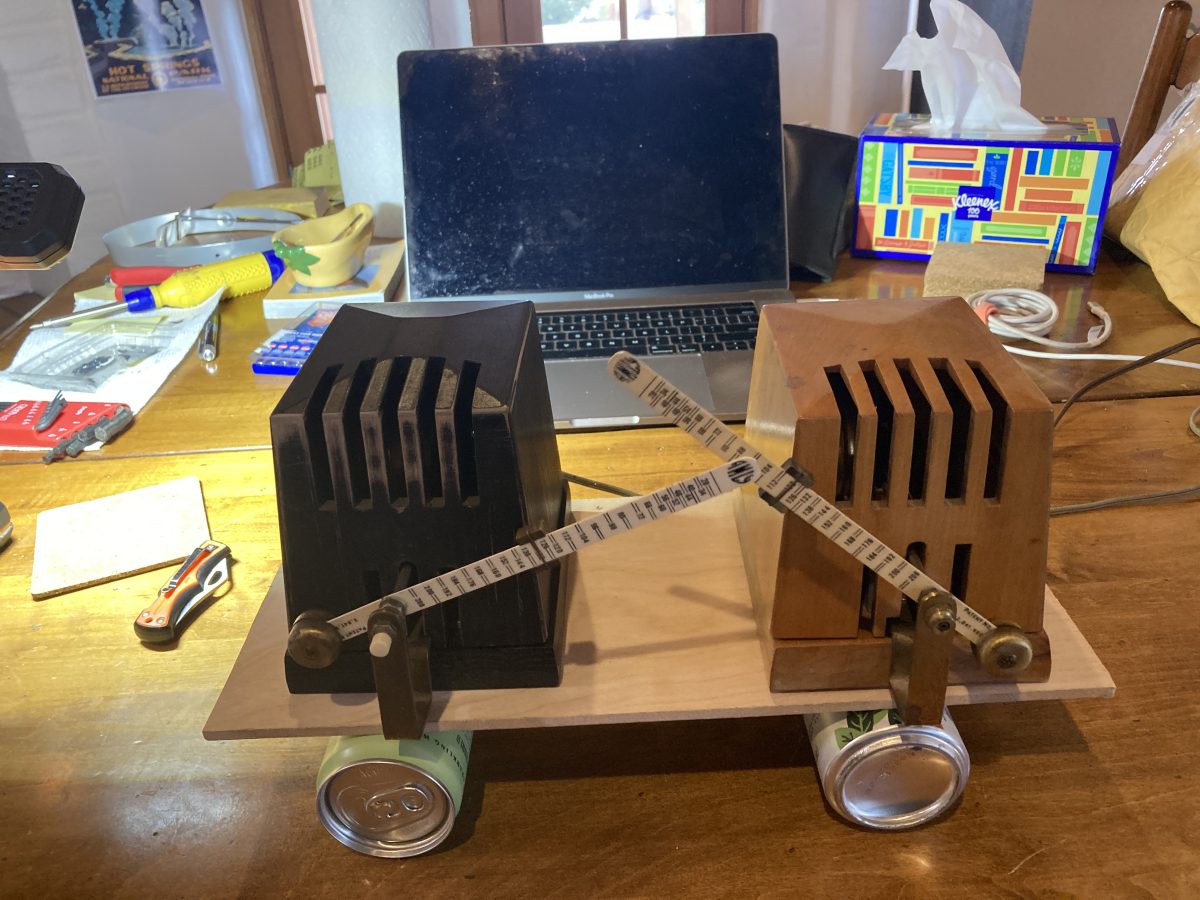
This is the setup and here is the synchronization in action. There is no way I could manually set these to metronomes exactly together so this is curious for two reasons: 1.) I’m still slightly syncopated with the right (blond wood) metronome and the “tick” and the “tock” bounce within the left metronome (black) ticks and tocks…….and 2.) these metronomes are powered by a clutch system–energy added (and tethered by an electric cord). So I’m assuming that a tiny bit of energy is shared within the system as a whole which corrals the movements of the right/blond metronome; it takes an extra amount of energy to escape this added movement, which the metronome cannot overcome. Scientists are still debating this.
Next, I’ll delve in to my experiments with Chopin’s G minor Ballade…. Stay tuned!

